Many middle-aged and elderly people have brain infarction, what causes brain infarction? Can they recover?
Many middle-aged and elderly people have brain infarction, this sentence is not exaggerated at all, nowadays young people have brain infarction are quite a lot, and as we grow older, the incidence of this brain infarction is really getting higher and higher.
However, not all middle-aged and elderly people with cerebral infarction are the kind of sudden slanting of the mouth and eyes, dizziness, blackness in front of the eyes, hardness of the tongue, and even half of the limbs numbness disorder, etc., as soon as it happens.There are a lot of most middle-aged and elderly people do not know that they have a cerebral infarction, just may be in a certain physical examination or visit to the doctor took a head CT or MRI found, this kind of cerebral infarction is called a lacunar cerebral infarction, belongs to the diagnosis of our medical imaging.
So for the brain infarction mentioned by the questioner that most middle-aged and elderly people have - lacunar cerebral infarction - what actually causes it? Can it be recovered?
The fact is that both severe cerebral infarctions and lacunar cerebral infarctions are related to the hardening of our arteries.
However, cavernous cerebral infarction is still somewhat different from the brain infarction that we usually talk about, mainly in the following two aspects:
First, the cerebral vessels it clogs are relatively small, and the infarcted area is also relatively small.It usually occurs in 100-micrometer vessels, and the infarct area, i.e., the size of the lesion, is usually less than 1 cm.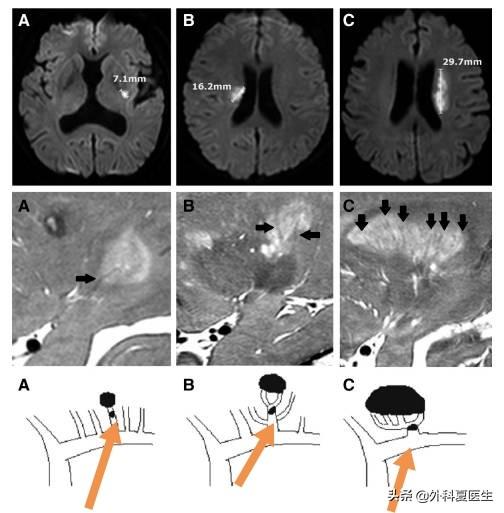
Second, the site of a lacunar cerebral infarction is more defined, whereas the general location of a cerebral infarction is indeterminate.Cavernous infarcts occur mainly in the perforating arteries inside our brain, such as the most common middle, posterior and basilar arteries. Therefore, the sites of cavernous infarcts are usually in the basal ganglia, thalamus, pontine, etc. of our brain.
This is why about 70% of patients with cavitary infarcts are found occasionally, as they are largely asymptomatic.
So what causes lacunar cerebral infarction?
It is mainly related to the following three points:
One is small arteriosclerosis;
Second, microemboli appear.It's when an embolus accidentally falls into one of the small blood vessels in our brain and just blocks it;
The third is atherosclerosis.A blockage of the aorta, which happens to block our brain penetrating arteries, can also cause a cavernous infarction.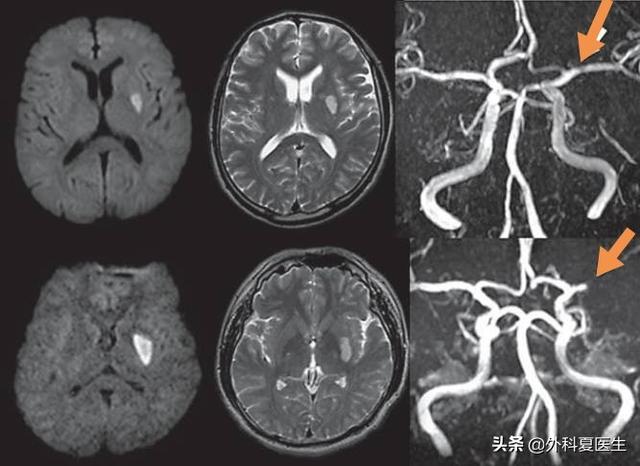
And can someone who has a lacunar cerebral infarction ever recover?
Of course, compared with cerebral infarction, cavernous cerebral infarction prognosis is very good, many of the middle-aged and old young people are asymptomatic, and do not need to be treated with medication, even for a small portion of these symptomatic cavernous infarction of the middle-aged and old people, through the use of some vasculopathic medication, a two-week period can be a very good cure.Only very few lacunar cerebral infarcts occurring in important parts of the brain do not return to normal and leave some disability.
但For most of the middle-aged and elderly cavity infarction of the main cause of atherosclerosis after ageing, this point can not be reversed, belongs to the normal physiological changes will inevitably occur after some pathological changes, can only slow down the development of lesions occurring in the process.Therefore, even if there is no symptom, it should not be underestimated and should be highly valued, especially patients with hypertension and atherosclerosis, which are the most common groups of people who suffer from caval infarction.
I am the organizer of a hemiplegic rehabilitation and exercise group in Tanghe County, Henan Province.
We did rehabilitation exercises together with a group of hemiplegic patients with sequelae of cerebrovascular disease. The group summarized some of the causes of cerebral infarction to share with you for your reference and warning!
1:High blood pressure, high blood sugar and high blood fat are the main causes of cerebrovascular disease. Most of the patients did not follow the doctor's instructions to control the three highs before the onset of the disease, which led to cerebral infarction or cerebral hemorrhage.
2:Some patients are congenital cerebral vascular malformation or stenosis, with dizziness and brain swelling, crooked mouth and eyes, walking unsteady and other symptoms when there is no timely medical treatment led to the sick friend.
3:Most of the patients in their thirties to fifties are the breadwinners of their families, and they have a short temper in their families, and they get angry and lash out whenever they move, and they don't have a good peace of mind, which, coupled with the pressure from various aspects of work and life, leads to cerebrovascular lesions.
4:Most of the sequelae of cerebrovascular disease patients before the onset of the disease have smoking and drinking late at night, not actively participate in moderate exercise bad habits.
5:No good eating habits, like to eat fat pork, fried food, high salt and high sugar. These high fat intake caused obesity, blood fat increase, etc., resulting in cerebrovascular lesions.
Nowadays, cerebrovascular disease is no longer exclusive to the elderly, we work out together with a huge number of people in their thirties to fifties. This requires that we in this age group should pay more attention to prevent the onset of cerebrovascular disease.
1:Diet to light, eat more fresh fruits and vegetables, drink more water, avoid alcohol and smoking, less oil and low salt, do not eat animal offal and fat pork. Chicken, duck, fish and meat in moderation. Do not eat high-fat and high-sugar foods.
2:Adopt a good habit of going to bed early and getting up early, and actively participate in a moderate amount of sports.
3:Maintain a calm and good state of mind, do not lose your temper and do not move. Be calm when things go wrong.
4:Have congenital cerebrovascular malformation or stenosis regular examination and follow the doctor's instructions for medication.
5:Strictly follow the doctor's instructions to control the three highs.
6:There are unexplained sudden dizziness, tinnitus and deafness, insensitive sense of smell, crooked mouth and eyes drooling, eyes closed, one side of the limbs numbness and weakness, especially numbness of the hands and feet, walking to one side tilted, lethargy, fatigue, etc. Cerebrovascular disease precursors such as timely access to medical care.
By doing the above you can effectively prevent the onset of cerebrovascular disease.
After the sequelae of cerebral infarction, as long as you take the initiative to do scientific and reasonable rehabilitation exercise, you can recover. We have accumulated some mature and effective exercise methods in the process of rehabilitation exercise. Follow me to get more exercise programs for different conditions and different ages. Feel free to comment, retweet, and like the workout videos we post every day. We will persistently work hard to share our spirit and skills to those who need it during our persistent workout process! All hemiplegic patients will always have the support of the Downriver Rehab and Exercise Group on their road to recovery, and we wish all of our patients a speedy recovery!

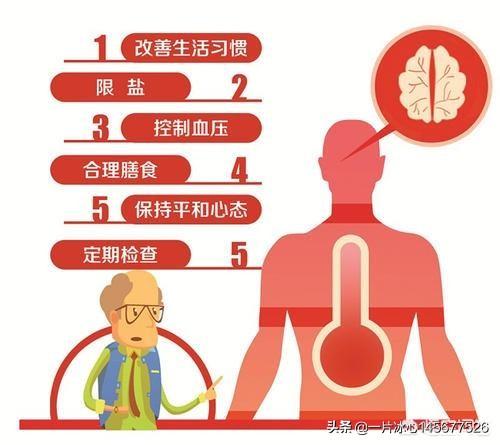


From how the infarction lesion is formed, we know that cerebral infarction is not untreatable, but there is a time window for treatment (generally 4.5 hours), and the purpose of treatment is to save the ischemic hemidiaphragm, not necrotic brain tissue (necrosis of brain cells is powerless to return to the sky, just as a person can not be resurrected from the dead), therefore, after cerebral infarction requires that we strive to realize the vascular recanalization as early as possible within the time window, to save the ischemic hemidiaphragm. The following is an example of how we can achieve revascularization
Because of the presence of many collateral circulations in the organism (which varies from person to person, with some people having abundant collateral circulations and others having few collateral circulations), if the onset of the disease achieves revascularization within a short period of time
Cerebral infarction is by far the cerebrovascular disease with the highest morbidity and mortality rate.
Simply put, the blood vessels that deliver nutrients and blood to the brain are blocked, the brain is not supplied with enough oxygen, and some of the more fragile brain tissue begins to necrose, which can lead to a cerebral infarction.
Especially after the age of 40, blood vessel hardening is serious, more prone to get cerebral infarction 'favor'.
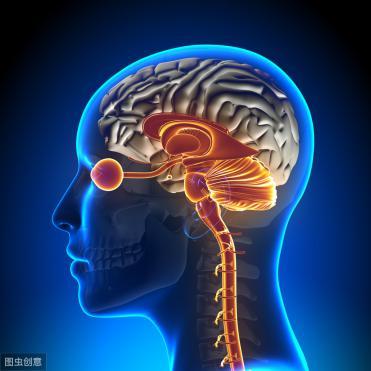
Brain infarction is mostly 'eat' out, and then eat 3 kinds of food, vigilant blood vessel blockage.
Food 1: Fried food
The food is fried at high temperatures and crunches in one bite.
But this tasty food, which contains a lot of fats and oils, and is consumed for long periods of time in excess of the normal amount required by the body, can linger in the blood vessels in a big way.
As a result, blood lipids thicken, blood clots increase, and cardiovascular disease ensues.
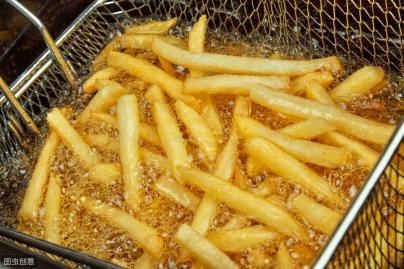
Food 2: Foods high in salt
With the popularization of the concept of health and wellness, most people know that excessive salt intake can trigger high blood pressure.
But some 'hidden' salts can also be easily overlooked. For example: processed meats, consumed oils, marinades, instant noodles, etc. These types of food are prepared with a large amount of salt to enhance the taste and extend the shelf life.
Long-term consumption of these foods can also cause sodium ions to remain in the blood, triggering an increase in blood pressure, affecting the vascular environment and inducing cerebral infarction.
It is recommended that, in choosing foods, you check the sodium in the ingredient list and reduce your salt intake.
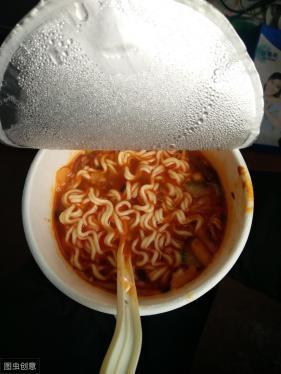
Food 3: Cake
Cake can give a sense of well-being and occasional consumption is not harmful to the body.
However, if consumed in excess, the large amount of sugar in the cake will disturb cholesterol, leading to vasoconstriction, increasing vascular pressure and blocking blood vessels, which can lead to cerebral infarction and other cardiovascular and cerebrovascular diseases.

3 Symptoms of Waking Up Early in the Morning When Brain Attacks Take Over, I Hope You Didn't Get Hit
Symptom 1: Headache
Headaches can be triggered by necrosis of some of the brain's tissues and obstruction of blood flow through this area.
Especially in the early morning, water loss is serious, the blood is relatively viscous, if you get up too hard, or stimulation, blood pressure rises rapidly, the brain suddenly lack of oxygen will directly lead to cerebral infarction or stroke occurs.

Symptom 2: Hardness of the tongue
If you wake up early and notice that your tongue is hard and your speech is not clear, seek medical attention.
Insufficient blood supply to the brain at this time can affect the brain's control of the facial nerves, leading to symptoms of a hardened tongue.
If it is accompanied by unilateral drooling, the condition is already very serious and should be guarded.

Symptom 3: Darkness before the eyes
When blood clots are present in the brainstem, cerebellum, and pons, they can cause a lack of blood supply to the retinal nerves and visual impairment.
Usually this condition returns after a few minutes, but it is a sign before a brain attack, so it is best to go to the hospital and get it checked out.

Do not want to cerebral infarction on the body, daily prevention can not be less, adhere to the 4 things, to protect cerebral vascular health.
Piece 1: Eat more antioxidants
Antioxidants, which are essential elements for the body, need to be consumed from food.
Harman, a British molecular biologist, states that oxidative stress determines lifespan.
Therefore, antioxidants are essential nutrients for vascular health and can have the ability to conserve blood vessels and prevent cardiovascular diseases.
Research has found that antioxidants into the body, can resist free radicals on the blood vessels "aging effect", so that blood vessels "youthful".
Effectively inhibit the formation of intravascular plaque, maintain the physiological function of blood vessels, reduce triglycerides, cholesterol, free radicals on blood vessels is damage, reduce cerebral infarction and other cerebrovascular incidence.
The main sources, natural plants such as Yuanfu chrysanthemum and autumn hemp seeds, which, among other thingsYuanfu chrysanthemum is a medicinal chrysanthemum with an antioxidant content of up to about 67%.Drinking it regularly can maintain blood vessels and reduce the occurrence of cerebral infarction.

No. 2: Stop Smoking and Limit Alcohol
Thousands of harmful substances in cigarettes, once into the blood vessels, will cause a sharp decrease in the oxygen content of the blood, blood viscosity, affecting the body's blood clotting mechanism, damage to the health of blood vessels.
Alcohol, on the other hand, can dilate blood vessels when ingested in small amounts. If alcohol abuse is prolonged, it can accelerate the rise in blood pressure, aggravate cardiac output, and cause an increase in the release of other vasoconstrictive substances, which can then lead to cerebral infarction.
For your health, it is best to stop smoking and limit alcohol.
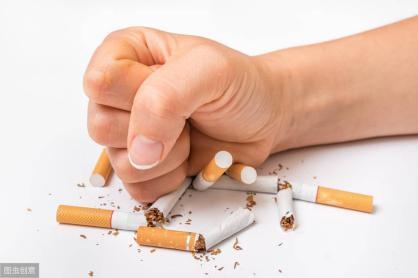
No. 3: Exercise is not an option
Exercise, is the cheapest and most effective way to boost your body's immunity.
The incidence of cardiovascular and cerebrovascular diseases can be reduced by about 30% by exercising consistently for more than 30 minutes a day.
Effective exercise promotes blood circulation, accelerates the metabolism of harmful substances, and also improves cardiopulmonary function.
It is recommended that if you do not have the habit of exercising, it is best to start with the simplest exercise, such as: jogging, brisk walking and so on. After a week and then slowly increase the amount of exercise.
Piece 4: 1-2-0 identification method
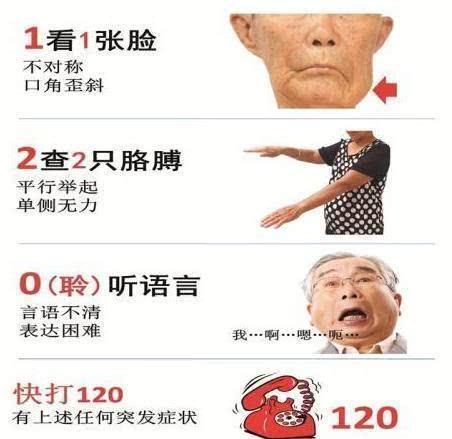
'1': see 1 asymmetrical, crooked-mouthed face;
'2': check both arms for unilateral weakness and numbness;
'0': listen (zero) to the speech and whether it is clear.
Not only middle-aged and elderly people, but also many young people suffer from cerebral infarction, and in terms of growth rate, it is much higher than that of the senior population.

The formation of cerebral infarction is more complex factors, many people can say one or two to, which is the most deeply rooted in the people's mind is a bad diet, but in fact, diet for cerebral infarction patients, although the adverse effect of the role of diet, but by no means as big as we think, in addition to the three highs, but the three highs itself is a class of diseases, can be triggered due to a variety of factors, the formation of factors and the cerebral infarction is more similar, so we always will be the three highs patient Therefore, we always call the three high patients the high-risk group of cardiovascular and cerebrovascular diseases.
In the past, cerebral infarction patients of advanced age, because of life and diet habits are more regular, people's gap is not big, mainly because of the age of the degree of hardening of blood vessels to determine the emergence of the timing of cerebral infarction; and nowadays the reason why the cerebral infarction of the younger generation, mainly because of the prevalence of electronic products, people relax the protection of the cervical spine after entertainment, so that cervical spine problems affecting the brain, triggered by the arrival of the cerebral infarction.
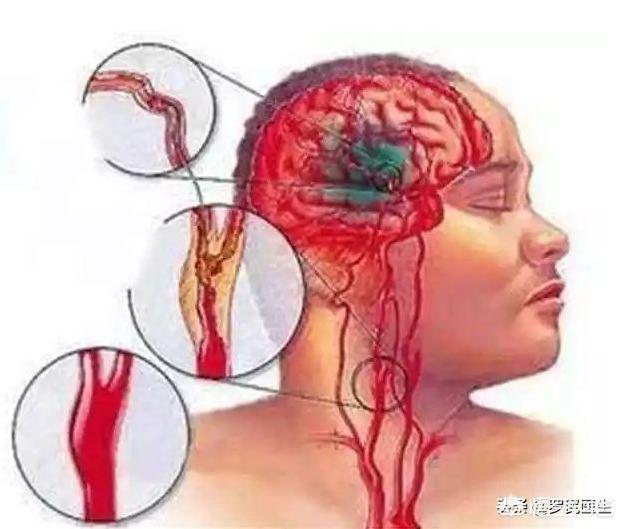
Brain attacks are reversible!
The treatment of patients with cerebral infarction is generally divided into two periods:
The first period is first aid
The patient's blood vessel is completely blocked by the embolus, and then the tissues in the brain area that need to be supplied with blood through this blood vessel become necrotic due to the lack of continuous perfusion of blood, and this necrotic process is very rapid, usually occurring in more than 5 minutes, and we must immediately salvage these dying cells,
This involves thrombolysis and thrombolysis. The first choice is pharmacologic thrombolysis, which can be resuscitated when the patient meets the indications for thrombolysis within 4.5 hours of the onset of the disease; however, if the patient is admitted to the hospital too late, he or she needs to be evaluated to see if there is still salvageable, and if there is, then mechanical thrombolysis will be necessary.
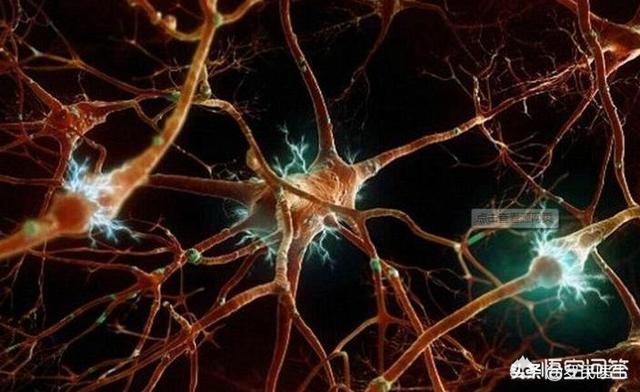
The second period is recovery
The patient's brain area tissue will be due to different rescue time, and different degrees of necrosis, and the human brain is in charge of all kinds of functions of the whole body, such as language, personality, limbs, respiration, vision, etc., once the necrosis will be dysfunction affecting the normal life, which is often referred to as cerebral infarction aftermath.
For such patients, there is no great danger in the short term, and its primary goal is to restore the lost function, but because the necrotic cells can not be regenerated, so the clinical recovery is very difficult, we need to activate the dormant nerve cells around this time, so that they represent the original necrotic cellular tissues, which, together with the rehabilitation training, can allow the patient to regain the previous state.
Nothing is absolute, there are exceptions to any disease, terminal illnesses survived not uncommon, common disease deaths have also heard, so I can not give any guarantee, but in my experience: "cerebral infarction as long as the correct treatment is taken in a timely manner, the chances of recovery are relatively large, regardless of whether it is in the acute stage or the recovery period.
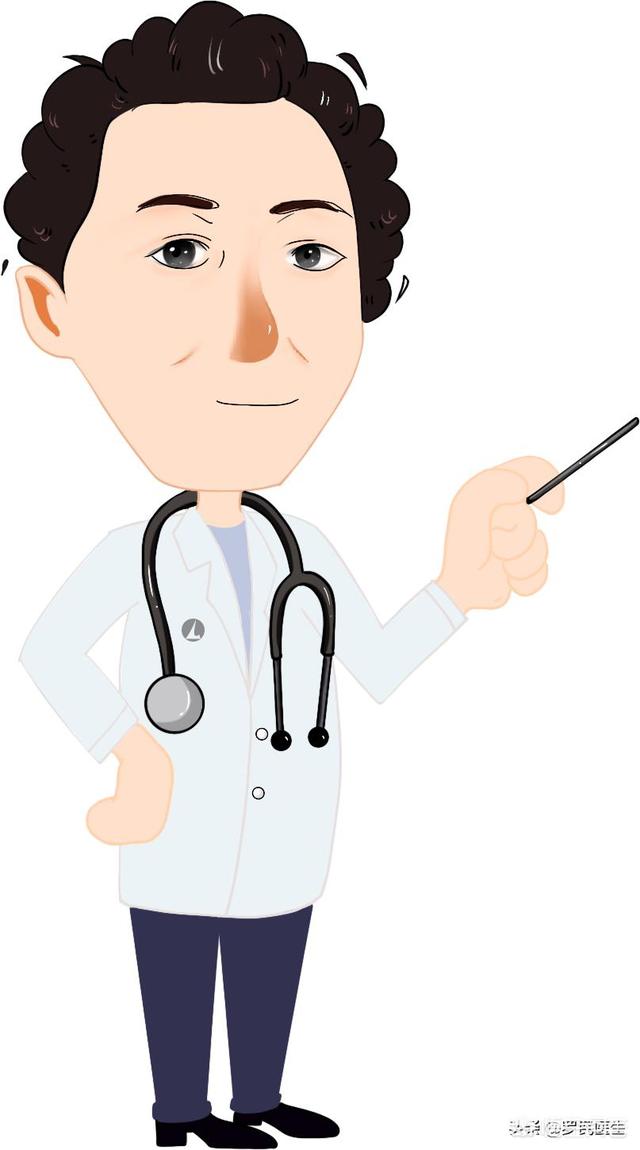
I hope my answer helps you!
If there's anything you don't understand, comment and private message me!
can be recovered, I am a cerebral infarction hemiplegia patient, in July 2018 by the time, when just by the time of a good slight, can move, and then hospitalized twice, on the hemiplegia of a good strong, the right half almost can not move, after two years of Chinese medicine conditioning, and now you can ride a bicycle, the action is very free!
My father went to the hospital with a cerebral infarction and didn't survive past the fifth day, he had severe high blood pressure before that, then a myocardial infarction, and had two surgeries. Earlier this year he was hospitalized again, got new medication, and then bought a sleep ventilator and oxygen machine. As a result, he still could not keep him. I see that the death notice states 15 diseases, which may have contributed to his death.
The doctor said the cerebral infarction is irreversible. Rehabilitation exercises can be done. Recover some
The cause of cerebral infarction is mainly considered to be due to the presence of increased blood viscosity, or due to the symptoms of cerebral vascular sclerosis and narrowing of the brain, which usually causes ischemic damage to the brain tissue, and will produce the corresponding dysfunctional sequelae. In the early stage, it can be treated with drugs to promote cerebral circulation and drugs to nourish brain cells. However, if the situation is more critical, we cannot rule out the need to consider surgical treatment.
Cerebral infarction can be completely recovered if the treatment is timely. For any patient with cerebral infarction, the only treatments that can open the blood vessels in the acute stage are thrombolysis and arterial thrombolysis. If a patient suddenly finds that he or she cannot speak clearly, or cannot understand what others say, or has a crooked mouth, or has numbness or weakness of one side of the limb, he or she should go to the hospital immediately, i.e., go to the hospital at the first time, and have an examination in the treatment window, and find that it is an ischemic cerebrovascular disease, and start the thrombolytic treatment. If there are no contraindications, thrombolysis is the only treatment that can open the blood vessels. If the time window is exceeded or there are contraindications to thrombolysis, there is the possibility of arterial thrombolysis, which are the only two treatments that can open the vessel in the acute phase. If the vessel is completely opened in the acute phase, the patient may be able to recover in the future.

Strengthen your body, go to bed early and get up early for a while better.
After the age of 55, cerebellar atrophy predisposes to cerebral infarction.
This question and answer are from the site users, does not represent the position of the site, such as infringement, please contact the administrator to delete.